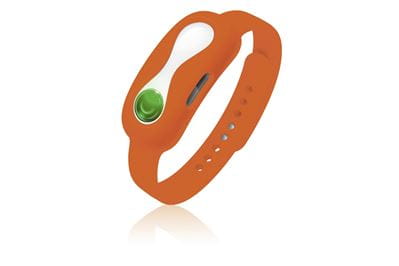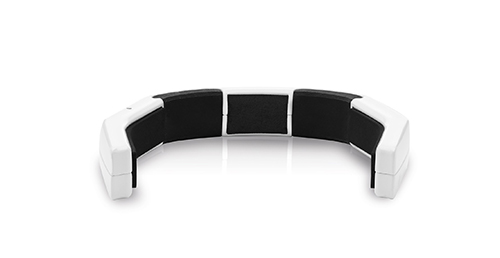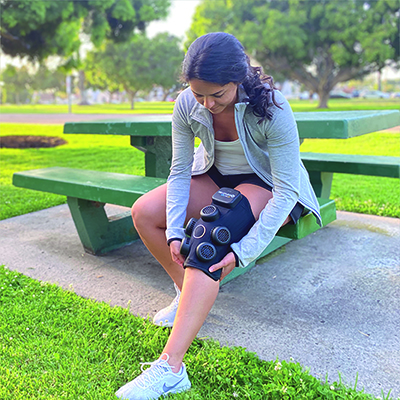The Business of Wellness
As the world grapples with the health implications of COVID-19, the wellness technology industry is quietly booming
As the world adjusts to the new normal in the midst of the COVID-19 pandemic, the importance of our health and of those who help us maintain it has never been in sharper focus. More than the absence of disease or infirmity, health is in equal measures physical, mental and social wellbeing, and for most, all three have been tested in 2020.
But while staying healthy is naturally top of everyone’s priorities, the business of wellness is often viewed with more suspicion. Whether it conjures up images of organic probiotic juices, relaxing inside a yurt on a mindfulness retreat in Sardinia or the fragrant waft of some pseudo-scientific essential oil, consumers are often sceptical when faced with products and services that promise the fuzzy concept of wellness.
It shouldn’t be so because wellness is the process of achieving health by practicing good habits chiefly through exercise, nutrition, sleep and social contact. And like healthcare, wellness is also big business. According to analyst Research and Markets the global healthcare market reached a value of $8.4 trillion in 2018 and is expected to continue to grow as populations age and lifestyles become more sedentary. Not to be outdone, in 2018 the global wellness economy was worth an estimated $4.5 trillion, more than half the size of health expenditure, and it too is growing. The long-term aim is to transfer the outlay on healthcare products and services to those of wellness. Spending money to stay healthy, rather than to just get healthy, promises greater return on investment.
According to non-profit organization, the Global Wellness Institute (GWI), consumer opinion is also shifting. “Once upon a time, our contact with wellness was occasional ... but this is changing fast,” says Katherine Johnston, Senior Research Fellow at GWI. “Wellness, for more people, is evolving from rarely to daily, from episodic to essential, from a luxury to a dominant lifestyle value. And that profound shift is driving powerful growth.”
Behind the boom
Many factors are driving growth in the wellness industry, but according to the GWI, four in particular stand out. Firstly, consumers are increasingly focused on nutrition, and are prepared to pay extra for “free-from” and organic food. At the same time ‘wellness tourism’ is generally on the rise (although it has taken more of a backseat during the pandemic as international travel remains off limits). As of 2017, the GWI claims the sector was worth $639 billion, with 830 million wellness trips made that year. And when the pandemic abates, wellness seekers will surely get back on the road.
Then there are the trends powered by technology. A byproduct of the rise of consumer monolith Amazon—not least during the pandemic when consumers prefer their ‘wellness’ delivered to their door—has been the e-commerce giant’s ability to position itself as the preferred channel for nutritional supplements and skincare products. The average consumer is spending $1300 a year on supplements, sports nutrition and skincare, and Amazon has established itself as the number one provider.
Wearable devices have also proliferated in the wellness industry ushering in the personalization of wellness rather than a one-size-fits-all approach with its inherent limitations. After all, your grandmother and a Tour De France cyclist have rather different metrics when it comes to determining their fitness for their stage in life. According to a 2019 survey by business news website, The Manifest, 56 percent of the population of the U.S.—about 183 million people—now own a connected wearable, and demand, as well as the sophistication of these devices, has increased dramatically. The days of mechanical pedometers and even digital step counters are history, people now want solutions that not only monitor their activity levels, but also their fitness, heart rate and its variability, blood oxygen saturation, muscle oxygen, sleep as well as emotional and mental health. The demands put on wearables and their makers by consumers is unprecedented. A 2018 Pricewaterhouse Coopers (PwC) report claims health-conscious consumers expect their wearable devices to help them live longer (70 percent), maintain a healthy weight (63 percent) and reduce their health insurance premium (62 percent). That’s quite an ask but does explain why the wearables market is expected to grow to $27 billion by 2022.
Wellness wearables
Smart healthcare solutions have grabbed all the headlines in 2020 as we reinvent the delivery of health services in a socially distanced world. While an array of Bluetooth LE- and other wireless-based technologies have eased the burden on overstretched health services and enabled good hygiene practice, contact tracing, social distancing, and home and remote patient monitoring, technology that allows individuals to practice wellness can, in theory, go one better. Wireless tech that helps prevent you getting sick rather than helping you recover after you’ve been ill, allows healthcare services to focus their attention on treatment for non-preventable conditions.
If two of the key trends powering the wellness industry are clean eating and wearable technology, then it is hardly surprising that solutions have already been developed that successfully marry the two. Late last year, London, U.K.-based DnaNudge launched a wearable device that uses a combination of the user’s DNA and wireless technology to help people make healthier food choices. After a one-time-use cheek swab test that analyses and maps the user’s genetic profile to key traits, the results are loaded onto a capsule that can be worn as ‘digital DNA’ on the wrist, fitted inside the Nordic Semiconductor-powered DnaBand wearable. The user can then scan the barcodes of approximately half a million food products and instantly have the device determine if the food is suitable for them based on their unique genetic traits.

Once the barcode is scanned, the device’s LED display flashes either green, to indicate a suitable food choice, or red, to indicate a choice less well-matched to their DNA profile. When the wearable is also used to monitor the user’s activity, an amber LED indicates a scanned product that might usually be suitable is not recommended because of the wearer’s lack of activity. So, for example, if a person has a high sensitivity to sugar, saturated fat or salt, and scans the barcode on a product with high levels of these ingredients they can be offered a healthier alternative.
According to DnaNudge CEO and Co-Founder, Professor Chris Toumazou, the technology has the ability to transform both shopping behavior and an individual’s long-term health. “Quite simply, [short term] diets don’t really work, and the usual guidelines about healthy eating are too easily ignored,” says Toumazou. “[By] using genetic insight into well-understood health risks and combining this with lifestyle ‘nudges’ based on your inactivity levels, we can all make better day-to-day decisions. This is a completely new way of thinking about what we’re eating, how much we’re moving, and making a big impact through small changes.”
Sleep well and destress
While DnaNudge is designed to address two of the key wellness factors in nutrition and exercise, New York-based MDCN Technologies has developed a solution that targets two others - sleep and stress. Earlier this year the company launched its NeoRhythm smart headband designed to “stimulate brainwaves” to help the user sleep better, destress and focus. While it may look like it belongs in the prop department of a science fiction movie, the device is in fact based on well-established scientific principles.

Employing U.S. Food and Drug Administration (FDA)-approved pulsed electromagnetic field (PEMF) technology, the wearable’s five magnetic field-generating inverted coils produce frequencies which encourage the human mind to function in an individual’s preferred state. The coils target specific areas in the brain (prefrontal cortex, temporal lobes, cerebellum, parietal lobe and occipital lobe) or spinal cord, and generate specific dominant rhythms that mirror the mind’s naturally-occurring frequencies that humans associate with specific activities. The wearer then selects from a range of stimulation programs—for example, sleep, relaxation, meditation and pain control—from a smartphone app using a Nordic-powered Bluetooth LE link.
For those still raising a suspicious eyebrow at the science behind PEMF technology, MDCN Technologies CEO, Marko Kadunc, is happy to explain. “How does PEMF really work?” asks Kadunc. “If you’ve ever felt yourself sleepy while on a train ride, [it’s] the repetitive [rhythm] of the wheels lulling you to sleep [and] there’s a neurological reason for that. The rhythm of the wheels matches a brain wave state that encourages relaxation and sleep. Our brains take a cue from the movements [and] the result is that your state of mind shifts into sleep mode.
“We want to bring PEMF to people to help them train their brain to work for them, not against them and in the comfort of their own home and before a clinical condition comes up. We try to offer our customers as much advice as we can on making their lives better, besides using our product.”
As far as the wellness technology industry as a whole is concerned, Kadunc sees only further growth ahead. “With technological development, the IoT and the rise of wireless solutions that are becoming more and more available, it gives scientists, developers and entrepreneurs unlimited possibilities to create products that could change people’s lives for the better in many ways,” says Kadunc. “Once the product is launched ... that’s only the beginning. It’s an ongoing journey and improvement never really ends.”
Exercise and recovery
While the gains to be had from good nutrition, sleeping well and managing stress are becoming better understood, the benefits of exercise to our health and wellness are fully established. Wristworn fitness trackers can reasonably lay claim to being one of the foundation stones of the wearable technology revolution that exploded into life over a decade ago and fitness monitoring remains the primary use case of wearable tech.
Whether you are a professional athlete or a Sunday stroller, exercise trackers are designed to motivate the user to keep going and achieve a greater level of fitness. What they don’t all do is tell the wearer when they are overreaching, at risk of injury or chronic pain or need to focus on recovery.
“High-impact sports take a toll on your body, and endurance sports wear you down. It is increasingly important to be proactive about taking care of yourself to continue performing at a high-level,” says Dan Evans, Co- Founder and CTO of RecoverX, a U.S.-based technology startup taking a different approach to wellness wearables.
Earlier this year the company released Contrast Knee, a Nordic-powered Bluetooth LE knee brace that provides electric-powered alternating heating and cooling therapy. Once strapped around the user’s knee the product employs built-in temperature sensors that regulate and sustain precise temperature therapy, controlled via the user’s smartphone. The varied phases of recovery help the user successfully manage inflammation, relieve pain and return to an active lifestyle.

Only part of the answer
However, amidst the almost universal clamour for wellness technology, there are others who encourage a degree of caution. Alison Spender, lead author of a 2018 discussion paper on wearables, the IoT and considerations for the life and health insurance industries, said the research was clear that for now wearables and the IoT were part of the wellness solution, not the solution itself.
“In the excitement and rush to adopt this emerging technology ... there is an unfounded belief among some that the technology alone can drive behaviour change for the better,” says Spender. “Wearables are not a panacea. That is not to say that technology should not be part of a behaviour change program, indeed it should be exactly that – part of the solution, permitting real time feedback and driving motivation in a broader campaign of change.”
It’s true that technology alone will never be the prerequisite to wellness—it can’t after all do the exercise, healthy eating, sleeping and social interaction for you—but it is the ideal enabler. Increasingly technology’s role can tell you when you should or shouldn’t work out, recover, relax or eat. The technology can also tell you how effective your activity, sleep or dietary habits have been.
The business of wellness is here and booming and the wireless technology to help us stay well is more than keeping pace. But because the technology is in its infancy, what happens next will be very interesting.